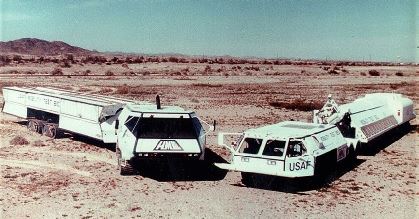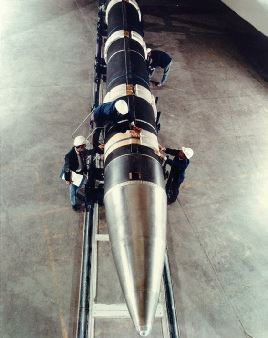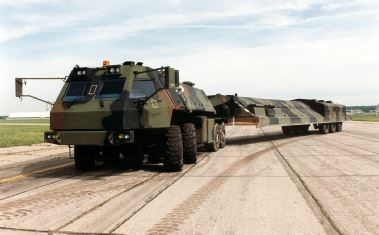The Future Throughout the life of the Air Force missile force, there have been numerous ideas for new systems of all types, and constant discussion as to the future of strategic deterrence. Throughout history, we have looked at various fixed and mobile land-based and airborne systems, and some have moved past the "idea" stage. The Peacekeeper program is a great example - it took many years to sort through all the possible basing options, from trains to pools to shelters, before settling on existing Minuteman silos. The experts also continue to look at options like precision non-nuclear strike and other roles beyond the traditional ICBM role. In the air to ground arena, the Air Force continues to introduce improved and increasing more accurate non-nuclear precision guided weapons, some powered and some that rely just on gravity and steering devices. We look at a couple of strategic systems here. You can find more in the AAFM files. |
|
| Small Intercontinental Ballistic Missile (ICBM), MGM-134A Midgetman There was a requirement in the mid-1980s for a small ICBM to be deployed on road vehicles, not easily be targeted by enemy forces. Contracts were awarded to Martin Marietta, Thiokol, Hercules, Aerojet, Boeing, General Electric, Rockwell and Logicon. The first Midgetman launch in 1989 failed, and the first successful test flight was on 18 April 1991. The Midgetman was a three-stage solid fuel missile that used a cold launch system, where the missile was ejected from the launch canister and ignited once the missile was free of the launcher. It was 46 ft long, diameter 3 ft 10 in, weight 30,000 lb, and had a range of 6,800 miles. Single Mark 21 Reentry Vehicle with a W87 warhead. The Midgetman would be deployed in Hard Mobile Launchers (HML), vehicles, with one missile per HML, capable of off-road operation. HMLs would normally remain on bases, only being deployed in times of international crisis when nuclear war was considered more likely. HML was radiation hardened and had a trailer mounted plow to dig the HML into the earth for additional nuclear blast protection. The program was canceled in January 1992. |



